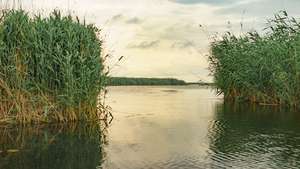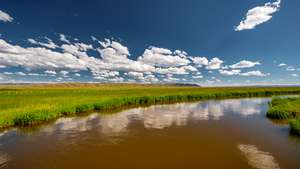
Anthropogenic changes in water ecosystem on the example оf the river Tisza.
 Lesya Vasilenko 1* Ph.D., Associate Professor
Lesya Vasilenko 1* Ph.D., Associate Professor Olena Zhukova 1 Ph.D., Associate Professor.
Olena Zhukova 1 Ph.D., Associate Professor. Irina Klimova 1 Ph.D., Associate Professor
Irina Klimova 1 Ph.D., Associate Professor Artem Gontscharenko 1 Post-graduate student
Artem Gontscharenko 1 Post-graduate student
1 Kyiv National University of Construction and Architecture, Vozduhoflotsky Avenue 31, Kyiv, 03680, Ukraine;
Received: 11/05/2018, Accepted: 12/24/2018, Available online: 12/26/2018.
DOI: https://doi.org/10.32557/useful-2-4-2018-0003
HDL: https://hdl.handle.net/20.500.12334/86
*Corresponding author e-mail: lesya.kiev@ukr.net
Under a creative commons license. Volume 2, Issue 4, 2018, pages: 26-32.
Plagiarism was checked by Grammarly
Author Keywords: water system, hydro ecosystem, prognosis.
Abstarct
While conducting the ecological estimation of the hydro ecosystems (HE) condition of Tisza water basin, engineering ecological indices and their parameters are used. The system-basin research approach of the water basin based on systematization and data processing of the ecological monitoring for a long-term period is used. Such period allowed to set scientific regularities of naturally-anthropogenic hydro ecosystems development in the conditions of constant anthropogenic load on them.
1. Introduction.
On the modern stage of industry development and national economy the problem of rational nature management became extraordinarily urgent. First and foremost, it is related to constantly growing anthropogenic influence caused by a human on the environment. It is a well-known fact that rivers are the biggest sources of fresh waters for the economy and industry. However, they are also placing for waste waters and industrial wastes dropping which results not only in qualitative but also in quantitative exhaustion. Therefore, the solution of maintenance and restoration of the water basins environmental assets and their ecological condition becomes especially urgent.
Ukrainian part of the Tisza basin belongs to both Upper Tisza and Middle Tisza. The Tisza basin is the main source of the Zakarpattia region water-supply. The average runoff total resources are 13300 million m3, in water-short year – 7290 million m3. Except the river Tisza waters, they consist of 9 storage ponds (total capacity is 59,3 million m3), 286 ponds (total capacity is 10,056 million m3) and 32 lakes with the Synevir lake as the largest one (capacity of 1,75 million m3) [3].
The river Tisza with its water mirror area of 157186 km² is the biggest Danube inflow. Its length is 966 km. The main part of flow is formed on the territories of four countries: Romania – 51%, Ukraine - 25,6%, Hungary – 10%, Slovakia - 13,4% [1,2].
For 1990-2016 period it can observe a tendency to a considerable reduction of water intake volumes which is possible mainly due to reduction of the use onto industrial and agricultural needs.
The water consumption level of the region is slight. In 2016 the total amount of water taken away from natural sources was 42,67 million m3 (43% was taken from surface water sand 57% - from ground waters). On the territory of the region there are no water houses that need a great amount of water [4]. The ground water prognosis resources of drinkable quality make 399 million m3/year, while the level of approved ones is 124 million m3/year. As at 2016 only about 18,85 million m3/year are used, i.e., the region has got a considerable potential for development for drinkable water-supply.
Contaminants come to the river Tisza basin through the natural and anthropogenic sources of contamination. The main contamination sources of the river Tisza basin surface-water are communal effluents (36%), industry (27%), agriculture (36%) and other (1%) [5].
For the last two decades, the political and economic situation caused changes in industrial activity that is realized in Zakarpattia. According to the state statistical accounting data about the waters usage, the total amount of water users dropping effluents into surface water objects of the river Tisza basin in 2016 was 106 subjects in the following sectors: 35 subjects in industry, including 2 in electricity, 1 in non-ferrous metallurgy, 1 in chemical and petrochemical, 4 in machine-building and fabricated metal, 5 in wood industry, 1 in wood chemical, 5 in building, 1 in light industry, 15 in food industry; 8 in agriculture; 1 in forest industry; 3 in transport; 1 in construction; 2 in trade; 3 in logistic support; 53 in housing and communal services [6].
References
[1] Geographic Encyclopedia of Ukraine: in 3 volumes / [ed. Marinich O. M.]. - K.: "Ukrainian Soviet Encyclope-dia" of Bazhan M.P. - T. 2. - 1989. - 480 pp. DOI: https://doi.org/10.1080/00385417.1960.10769893
[2] Pop S. S. Natural Resources of Transcarpathia: Teach. aid / S. S. Pop - [2nd edition]. - Uzhhorod: Spectral, 2003. - 296 pp. DOI: https://doi.org/10.2307/4147866
[3] Nature of the Transcarpathian region [ed. Gerenchuk K.I.]. - Lviv: Higher school, 1981. - 156 pp. DOI: http://dx.doi.org/10.30970/vch.5901.196
[4] Zastavecka O.V. Geography of Transcarpathian region: textbook / O.V. Zastavetska, B.I. Zastavsky, I.I. Didchuk, D.V. Tkach. - Ternopil, 1996. - 96 pp. DOI: https://doi.org/10.23939/chcht12.04.447
[5] Rudenko V.P. Natural Resource Potential of Ukraine / V.P. Rudenko - K.: Lybid, 1994. – 150pp. DOI: https://doi.org/10.1134/S1875372811010161
[6] Water Fund of Transcarpathian Region (surface water) [reference edition]. - Uzhgorod: State Committee for Wa-ter Supply of Ukraine. Transcarpathian Regional Water Authority - 2007. - 35 pp. DOI: https://doi.org/10.15407/visn2017.10.053
Please cite as: L. Vasilenko, O. Zhukova, I. Klimova, A. Gontscharenko “Anthropogenic changes in water ecosystem on the example оf the river Tisza.” USEFUL online journal, vol. 2, no. 4, pp. 26–32, December 2018. DOI: https://doi.org/10.32557/useful-2-4-2018-0003








Comments